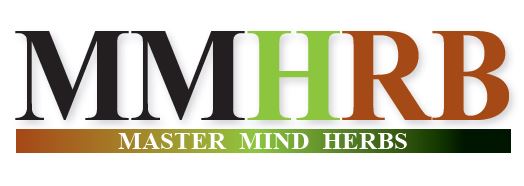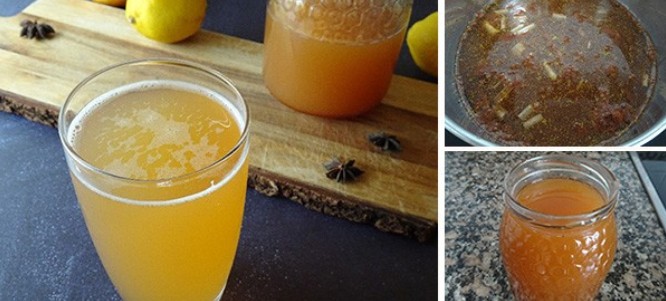 Knowing How from the Field of Master Mind Herbs (MMHRB)
Knowing How from the Field of Master Mind Herbs (MMHRB)
Shared from the research of: Joseph Mercado
Article Author: Crissy Joshua – The Lost Herbs
To: Herbal Lover
Blog Post #1184
Re: How To Make Quinine
Date and Time: Monday, November 15, 2021 at 10:19 a.m.
Dear Herbal Lover,
Quinine is found in the Cinchona tree which is native to Peru.
Even before Quinine was isolated as a compound in 1820 it was used to treat malaria nearly 200 years prior using the bark from the Cinchona tree.
It’s still used to treat malaria but is also popularly found in tonic water. This quinine mix has a number of ways to help the immune system.
Let’s look at some of the ingredients’ health benefits and then how to make the recipe.
Medicinal Benefits Of This Quinine Mixture:
Making quinine at home allows you to bundle lots of healthy ingredients together so you can take them all at once.
Let’s look at how the ingredients in this powerful drink can benefit your immune system and health.
Water:
Water plays an essential role in everyday bodily functions. Drinking plenty of water each day helps boost your immune system by balancing the body.
It especially helps as we get older by reducing inflammation and tissue damage.
Water will also help other nutrients support your body better by distributing them throughout the body.
Quinine from Cinchona Bark:
How to Make Quinine at Home for the Immune System – Cinchona:
While not as common as some other remedies, quinine tincture extracted from Cinchona bark is often used to boost the immune system.
It can be found in liquid form and capsules. Quinine may also relieve muscle cramps and improve digestive health.
Citrus (Lemon & Orange Zest, Citric Acid)How to Make Quinine at Home for the Immune System – Citrus:
Rich in vitamin C, it can help increase the production of white blood cells helping to ward off infections.
D-limonene is found in lemon and orange rind and has anti-inflammatory, anti-stress, and antioxidant properties.
Citric acid also has other potential benefits like protecting against kidney stones and helping the body absorb nutrients.
Star Anise:
How to Make Quinine at Home for the Immune System – Star Anise:
Star Anise is known to stimulate the immune system. Another health benefit that it supports is respiratory infections by reducing inflammation.
Star Anise is also great for your circulation by boosting red blood cell production.
It’s also a useful spice when it comes to digestion because it can reduce bloating and cramping.
Boasting a range of antioxidants, it can fight free radicals and help prevent some cancers.
Lemongrass:
How to Make Quinine at Home for the Immune System – Lemongrass:
Lemongrass is another ingredient that can protect against free radicals, reducing inflammation, which is known to be a precursor to many chronic diseases.
It can also lower cholesterol and the risk of certain infections presenting themselves.
Lemongrass can boost red blood cell levels too, probably due to its antioxidants.
It can even help to block the sensation of pain just by taking it in a tea.
Being high in potassium, it is good at controlling blood pressure and promoting blood circulation as well.
Coriander Powder:
How to Make Quinine at Home for the Immune System – Corriander
Coriander powder has hypoglycaemic properties that help it reduce blood sugar levels.
It also has plenty of anti-bacterial, anti-microbial, and antiseptic properties making it useful for protecting the body against many infections.
Coriander powder also has the potential to reduce bad cholesterol and raise good cholesterol levels.
Owing to its essential vitamins, it is great for hair and skin, helping to prevent signs of aging and stimulating new hair growth.
Who Should Avoid Taking Quinine?
Quinine from Cinchona tree bark can interact with quite a few medications including:
How to Make Quinine at Home for the Immune System – Cinchona Bark:
- Blood thinners
- Antidepressants
- Statins
- Antiacids
- Neuromuscular-blocking drugs
- Seizure medication
- Antibiotics
Other people who should avoid it include those who are pregnant or breastfeeding, have liver or kidney disease, have low blood sugar levels, or have abnormal heart rhythms.
If you’re taking any other medication or have any other underlying health conditions you should speak to your doctor to make sure quinine won’t negatively impact your condition or medication.
How To Make This Quinine At Home:
This Quinine mix takes approximately 1 hour of prep and cook time and then 72 hours in the fridge plus you need to shake it once a day.
The quantities below will give you 12 portions if you mix the quinine 1 part to 2 parts water/sparkling water.
Ingredients:
How to Make Quinine at Home for the Immune System – Ingredients:
- 4 cups of filtered water
- 2 Teaspoons of powdered cinchona bark (3 grams)
- 1 Orange (zest only)
- 2 Lemons (zest only)
- 2 Star anise pods
- 1 Lemongrass stalk
- 2 Tablespoons of citric acid
- 1 teaspoon of coriander powder (or 1 ¼ teaspoon of coriander seeds)
- 10 drops of liquid stevia
- Water/sparkling water (to mix with once the Quinine mixture is ready)
Utensils:
How to Make Quinine at Home for the Immune System – Utensils:
- Small sharp knife
- Chopping board
- Medium-sized pot and lid
- Fine grater
- Wooden spoon
- Cheesecloth
- Fine strainer
- 2 Containers (1 – to store Quinine mixture in, 1 – to strain Quinine mixture into)
Method:
How to Make Quinine at Home for the Immune System – Step 1:
- Trim off the root ends of 1 lemongrass stalk and peel the outer layer off.
- Cut your stalk into small pieces and add them to the pot.
- Zest the lemons and orange and add just the zest to the pot.
- You can keep the lemons and oranges to use the juice for another recipe.
How to Make Quinine at Home for the Immune System – Step 2:
- Add 2 teaspoons of powdered cinchona bark, 2 star anise pods, 2 tablespoons of citric acid, and 1 teaspoon of coriander powder to the pot. Now add 4 cups of filtered water and give everything a quick stir with a wooden spoon.
How to Make Quinine at Home for the Immune System – Step 3:
- Cover and bring to a high simmer and leave it at the same heat for 30 minutes.
How to Make Quinine at Home for the Immune System – Step 4:
- Take it off the heat and let it cool to room temp.
How to Make Quinine at Home for the Immune System – Step 5:
- Pour it into a container (a glass jar works fine) with the lid screwed on and put it in the fridge for 72 hours, giving it a light shake a couple of times each day to mix up all of the sediment from the bottom.
How to Make Quinine at Home for the Immune System – Step 6:
- When 72 hour hours have passed, take it out of the fridge.
- Get some cheesecloth and fold it over generously and place it over a fine sieve.
How to Make Quinine at Home for the Immune System – Step 7
- Pour your quinine mixture through the strainer and cheesecloth and you can discard all of the remnants (e.g. star anise) so you are just left with the liquid.
How to Make Quinine at Home for the Immune System – Step 8
- Now you can test your mixture, although I recommend diluting it with plain filtered water or soda/sparkling water before you do this as it will be very strong.
- Use at least double the amount of water to add to the Quinine mixture (or even more water, to taste).
- So you would have ⅓ cup of quinine and ⅔ water.
How to Make Quinine at Home for the Immune System – Dosage:
- Using a 1:2 ratio of quinine to water quantity you will end up with around 8 cups of diluted mixture (aka homemade tonic water).
- You can drink up to 3 cups per week and it will store in the fridge for up to 1 month comfortably.
Make sure you don’t use an airtight lid but just lightly seal it because you want to let air escape gradually.
If you are using soda/sparkling water to mix and want it fizzy every time you drink it then add this separately at the time of pouring your drink, rather than storing it in the same jar or container as your Quinine.
I haven’t used much stevia in this recipe because I prefer food and drinks less sweet.
You may want to add more once you’ve tested your batch.
Content Source: The Lost Herbs

 Email Us a Message
Email Us a Message 

Please send us a personal message below and we will serve you momentarily.
We appreciate you visiting the MMU Global Research Directory
For more blog posts, videos, articles, and to generate more knowledge, please feel free and…





 Fly Over to the MMU Facebook Page with Hoot
Fly Over to the MMU Facebook Page with Hoot
 Visit the MMA Facebook Group Today
Visit the MMA Facebook Group Today